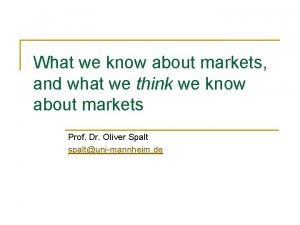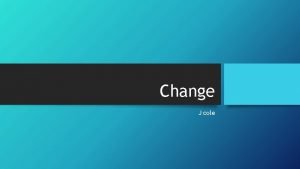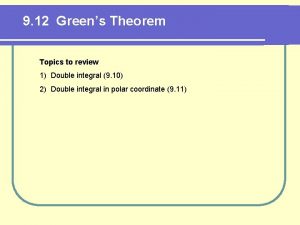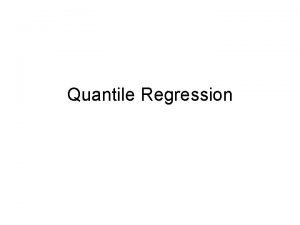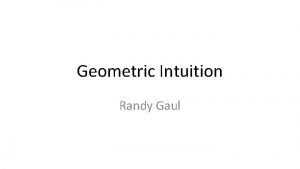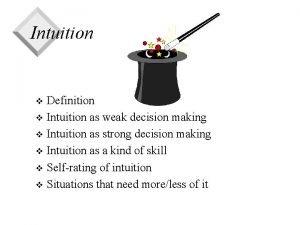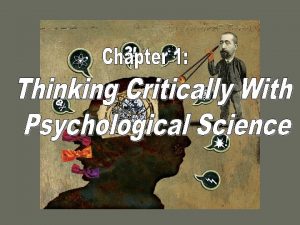http rpsychologist comd 3tdist kahneman on expert intuition





- Slides: 5

http: //rpsychologist. com/d 3/tdist/

kahneman on expert intuition

Kurt Gray challenges. . . it is all about harm

1. 2. 3. 4. 5. 6. 7. 8. Study questions What is a sampling distribution? What is a sampling distribution of the means? What is the difference between this distribution and a population distribution? What is the central limit theorem? What does it allow us to do, in terms of inferential statistics? What role does the number of samples play in this process? What is the standard error of the mean? What does a large standard error of the mean represent, versus a small one? What factors contribute to the size of the standard error of the mean? Draw two sampling distribution of the means, one derived from a population with a small standard deviation, the other with a large standard deviation. Draw two sampling distribution of the means, one with a large number of samples taken, the other with a smaller number of samples taken. What is the probability that a sample mean will be within one standard error of the population mean? What is the probability that a sample mean will be within two standard errors of the population mean? What is the probability that the sample mean will be greater than the population mean? What is the probability that the sample mean will be less than the population mean? What is the probability that the sample mean will be greater than one standard error above the population mean? What is the probability that the sample mean will be greater than two standard errors below the population mean? Can you come up with your own problem as well? Do it! If given a population mean, a population standard deviation, a sample size, and a sample mean, calculate: the probability that the sample represents the population. (we did this in class twice this week). Be able to do this if given a word problem! What is a “t” distribution? How does it differ from a “z” distribution? What are the circumstances where you need to calculate a t statistic rather than a z statistic?

1. How does Kahneman define “overconfidence”? Why is the following statement an example of this: “ 74% of investment managers believe they deliver above average returns”. 2. What is hindsight bias. Provide examples of hindsight bias. 3. How does system one make you feel confident…when it shouldn’t. Why are professors, doctors, and pundits often over confident? 4. What does Kahneman suggest as a solution for the problems of overconfidence? 5. What is “expert intuition”? What are the conditions that lead to overconfidence? What are the conditions that lead to expert intuition? Be specific, and provide an example of expert intuition and what led to it. 6. What is a “pre-mortem”. What is “optimum bias, and how can it lead to poor decision making in terms of starting a business due to “competition neglect”? 7. What did Haidt and others get wrong with the five moral foundations? Be specific with your answer here. What did the experiments by Fehr and Gachter demonstrate? Also be specific with your answer. List the SIX moral foundations. Be able to match them if given a variety of descriptions, including whether it is associated with conservative or liberal politics. 8. What is Kurt Gray’s criticisms of Haidt’s moral foundations theory? Be specific and detailed with your answer. 9. Be able to compare and contrast, pre-modernism, and post modernist thinking. Why does Mike feel some sort of irony, that post modernism and pre modernism has some similar tenets, yet pre-modernism can be critical of postmodernism? 10. What is the sokal squared hoax? Provide an example. What was Peter Boghossian’s motive for the sokal squared hoax? What are “grievance studies” according to Boghossian? Why does he think these types of disciplines are bad for students? What does he think the basis of morality is? Why is he upset that he cannot get other faculty to debate him? Does he think these disciplines provide enough multiple perspectives on issues? Does he think these issues are completely unimportant? What is the current culture war (version 2. 0) according to Boghossian? How does he compare debates he has with theologists (pre-modernists) versus with post-modernists? How did this motivate him to make these hoaxes? 11. What does Jerry Coyne mean by the “authoritarian left”? What does he think about “original sin” and how does he relate this to religious groups and the concept of male (or white, cis-gendered, etc) privilege? What is his political affiliation? What has changed for him? Why is he not optimistic about the left’s political strategy? What does he recommend in terms of having political discourse with the opposite side, based on his past experience teaching evolution to creationists and religious groups?

